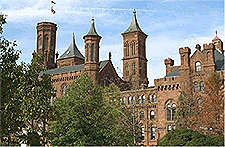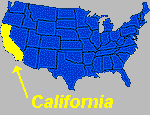 |
The Case Of The
Missing Brain (Now That It's Found, Where Does It Belong?) |
 |
 |
The Case Of The
Missing Brain (Now That It's Found, Where Does It Belong?) |
 |
|
By Ellen Kuwana Neuroscience for Kids Staff Writer April 14, 1999 The Smithsonian Museum in Washington, D.C. is a brainy place. It is the guardian for more than 300 human brains, all stored in a climate-controlled facility in Maryland. One of these brains has been receiving a lot of attention lately. In 1911, Ishi, a Native American, stumbled out of the Californian wilderness and was befriended by anthropologists. He was the last member of the Yahi, a tribe of California Indians. White settlers had directly or indirectly contributed to their numbers dwindling from 20,000 to 1 in less than a century. Ishi spent the next five years living at the University of California San Francisco campus and sharing with the anthropologists his language (one of the anthropologists spoke a dialect that Ishi could understand), beliefs, and tribal arts. Exposed to a society with diseases that were foreign to him, Ishi contracted tuberculosis and died in 1916. He was cremated and the urn containing his ashes was placed in a cemetery in a city just south of San Francisco. However, we now know that his brain was not buried with him. |
 The Smithsonian 
|
|
In February 1999, according to an article published in the Seattle Times
(March 25, 1999, page A10), two researchers announced that they had found
a letter stating that Ishi's brain had been removed during autopsy and
sent to the Smithsonian Museum.
A group of Northern California Indians have proposed that they be given custody of Ishi's brain, which they will bury in the area of California where his people once lived. Although this seems like a reasonable solution, the Smithsonian has launched a search for Ishi's descendants, or people more closely related to him than the group of Northern Californian Indians. As a result of this search, Smithsonian researchers have found nine Americans who claim to have descended from the Yana, a sub-tribe of the Yahi. Further complicating the situation is an assertion by some researchers that Ishi was probably not full Yahi, but was perhaps half Maidu or Wintu. |
| For more information on Ishi and his brain, see: |
| BACK TO: | Neuroscience In The News | Table of Contents |
![[email]](./gif/menue.gif) Send E-mail |
 Fill out survey |
 Get Newsletter |
 Search Pages |